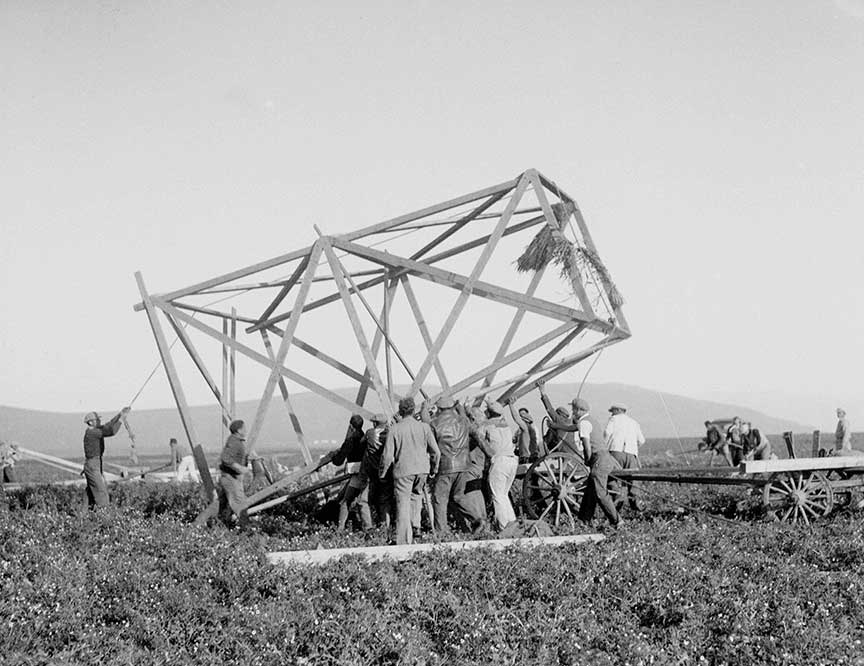1938 HOMA U'MIGDAL (Wall & Watchtower)

Migdal (tower going up)
Within a two year period, 52 settlements were established. Each of these settlements was created in one day.
The Peel Commission Plan, which proposed partition of Mandated Palestine into Arab and Jewish States based on the settlement patterns of the Jews of Palestine, underscored the need to settle unpopulated areas of Palestine. The JNF therefore made considerable efforts to acquire land in those parts of the Galilee where there were few Jewish settlers. By this time, as the Arab revolt was in full swing, it was clear that Jewish settlement could not be established in new parts of the country without immediate defense against Arab attack. Thus, the concept of setting up a defensive wall and tower during the first days of construction was instituted. From 1936 through 1939, 53 new settlements were established, almost all in areas that had been sparsely settled until that time.
This period was known as the era of the “Homa and Migdal settlements”, named after the towers and stockades established on the first day in each new community. The settlement that was considered the culmination of the Homa and Migdal plan, was Hanita, established on the northern border, on March 21, 1938. This settlement was over 800 meters from the nearest road, and thus, material had to be carried by hand and by donkey to the new site. Over 400 members of the Haganah from throughout the country were mobilized to participate in this settlement effort. Within the first night after the settlement, Arabs attacked the settlers, but were driven off with the loss of two lives. In subsequent days, the Arabs continued (unsuccessfully) to try to remove the settlers. Ultimately, Hanita became the anchor for further settlement of the Northern Galilee.
 >
>